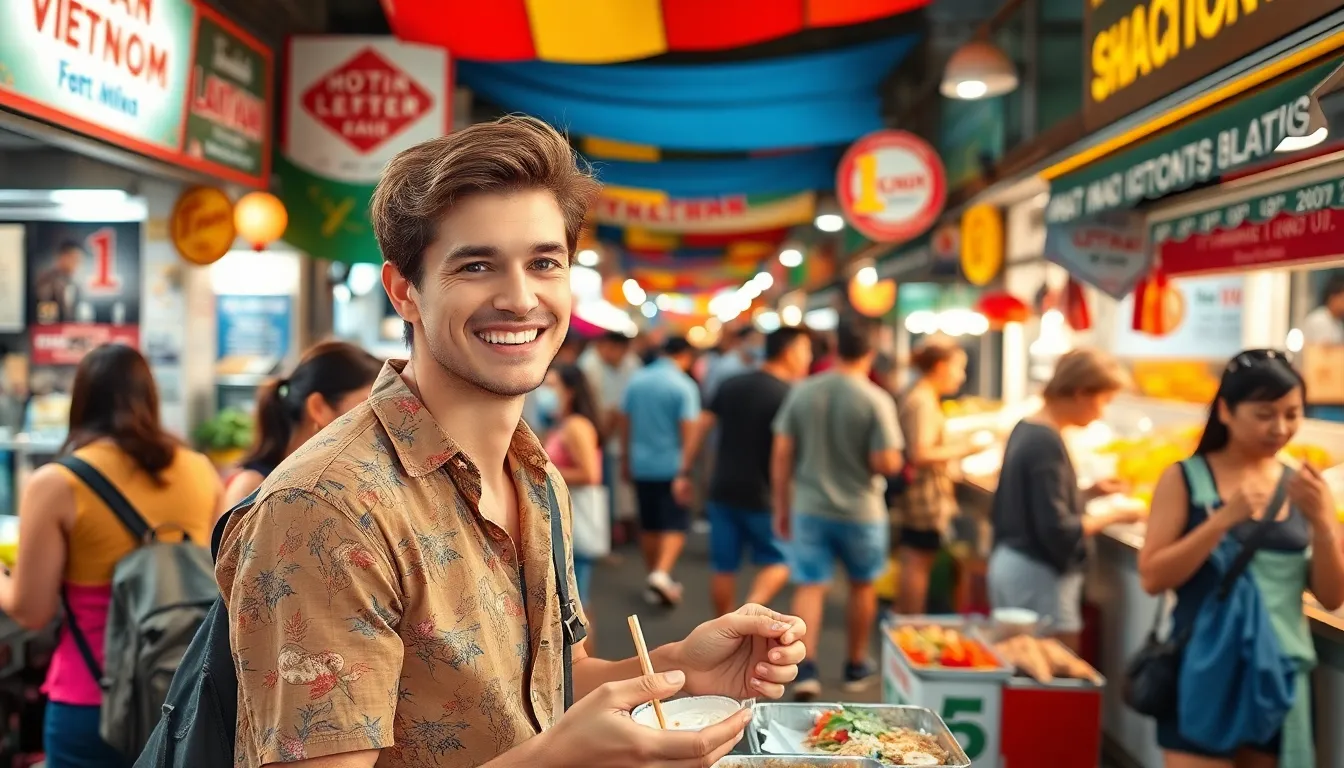Table of Contents
ToggleVietnam’s a treasure trove of breathtaking landscapes, rich history, and mouthwatering cuisine just waiting to be explored. From the bustling streets of Ho Chi Minh City to the serene beauty of Ha Long Bay, this vibrant country offers something for every traveler. But before packing those flip-flops and sunscreen, it’s wise to arm yourself with a few insider tips that can transform a good trip into an unforgettable adventure.
Essential Vietnam Travel Tips
Pack light, since using public transportation is common in Vietnam. Choose comfortable clothing suited for the warm climate, especially in southern regions. Consider bringing a lightweight rain jacket for the rainy season, which lasts from May to October.
Learn basic Vietnamese phrases, as locals appreciate the effort. Simple greetings and thank-yous can enhance interactions and show respect for the culture. Many Vietnamese people in tourist areas speak English, but knowing a few words fosters goodwill.
Understand the currency, Vietnamese Dong (VND), and exchange rates prior to arrival. Street vendors and local markets typically prefer cash transactions. ATMs are widely available but may charge fees for international cards.
Explore local cuisine safely. Street food often provides delicious and authentic flavors. Observing busy stalls indicates fresh, popular options. However, ensure food is cooked to order to minimize health risks.
Be cautious when crossing streets. Traffic in cities can be chaotic, with motorbikes being the primary mode of transportation. Look for a clear gap in traffic and maintain a steady pace while crossing.
Respect cultural sites and local customs at all times. Dress conservatively when visiting temples and religious places, removing shoes before entering sacred areas. Engaging with local customs shows appreciation for Vietnam’s rich heritage.
Lastly, stay connected. Wi-Fi is frequently available in hotels and cafes. Purchasing a local SIM card can still enhance navigation and communication during travel, ensuring a smooth experience throughout the journey.
Planning Your Trip

Planning an adventure in Vietnam requires attention to detail. It’s essential to know the optimal times for visiting and understand the documentation needed for a smooth entry into the country.
Best Time to Visit
The ideal time to explore Vietnam depends on regions. From December to February, northern cities like Hanoi enjoy cooler temperatures, perfect for sightseeing. Conversely, the south experiences dry conditions from December to April, making it an excellent time for beach outings. March to May features warmer weather, while rainy seasons from June to August bring high humidity. Additionally, festivals like Tet, the Lunar New Year, occur in late January or early February, offering unique cultural experiences and crowds.
Required Documents and Visas
Travelers need a valid passport for entry into Vietnam. Most foreign visitors require a visa, which can be obtained through an embassy, online application, or visa on arrival. E-visas are available for citizens from 80 countries, allowing stays of up to 30 days. Check the visa requirements based on nationality before departure, as regulations may differ. Keep copies of all documents, including itineraries and accommodation details, to ensure easy access during your trip.
Local Culture and Etiquette
Vietnamese culture is rich with traditions and customs that visitors should respect. Understanding these practices enhances interactions with locals and fosters positive experiences.
Understanding Vietnamese Customs
Vietnamese customs reflect the country’s history and values. Family plays a central role, influencing social dynamics and decision-making. Respect for elders is essential, seen in everyday interactions. In temples and pagodas, dressing modestly shows respect for spiritual beliefs. Festivals like Tet, the Lunar New Year, highlight the importance of seasonal changes and family reunions. Acceptance of gifts, especially food, indicates hospitality and generosity. Engaging in traditional ceremonies, such as ancestor worship, provides insight into local customs.
Greeting Etiquette
Greeting etiquette in Vietnam emphasizes politeness and formality. A slight bow or nod is common when meeting someone, especially an elder. Addressing individuals with their title or relation, like “aunt” or “uncle,” demonstrates respect. Handshakes are also prevalent, typically initiated by the person of higher social status. Maintaining eye contact during greetings indicates sincerity and respect. Finally, avoid using the left hand for greetings or handing over items, as it’s considered impolite. Emphasizing warmth and friendliness is key to making a positive impression.
Transportation Options
Vietnam offers various transportation options for travelers to navigate its bustling cities and serene countryside.
Getting Around the City
Exploring cities like Ho Chi Minh City or Hanoi comes easy with numerous transportation modes. Ride-sharing apps such as Grab provide convenient car and motorbike services. Public buses serve different routes, ensuring affordability for travelers. Taxis remain a reliable choice; they operate widely, and many feature meters. Motorbike rentals create an adventurous option for confident riders, allowing for more freedom. Cyclo rides offer a unique way to experience the city’s charm while cruising slowly through the streets. Personal safety remains paramount, so selecting licensed services is vital.
Traveling Between Cities
Travelers can connect efficiently between cities through various means. Trains offer scenic routes along the coast, making them popular for longer distances. Buses serve as economical alternatives, with frequent schedules catering to popular routes. Domestic flights operate between major cities, significantly cutting travel time. Each option provides a distinct view of Vietnam’s landscapes, adding to the overall experience. For a more adventurous journey, consider booking sleeper buses, offering overnight travel for convenience. Ensure booking in advance during peak times for the best availability.
Food and Dining Tips
Vietnamese cuisine offers a unique blend of flavors, textures, and aromas that captivate travelers. Understanding what to try and the customs surrounding meals enhances the dining experience.
Must-Try Vietnamese Dishes
Pho stands out as a quintessential dish. This noodle soup, made with broth, rice noodles, herbs, and meat, is a must. Banh mi, a Vietnamese sandwich filled with meats and pickled vegetables, offers a delicious street food option. Bun cha features grilled pork patties served with vermicelli noodles and fresh herbs, providing a flavorful combination. Spring rolls, known as goi cuon, deliver fresh ingredients wrapped in rice paper, perfect for a light snack. Finally, cao lau, a noodle dish from Hoi An, showcases regional flavors that travelers should not miss.
Dining Etiquette
Dining in Vietnam involves specific customs and practices. Visitors should expect to share dishes among all diners, promoting a communal dining experience. Pointing with feet is considered disrespectful; instead, gestures with hands show politeness. When receiving food, one should use the right hand, as the left is reserved for less formal tasks. Tipping is appreciated but not mandatory, generally rounding up the bill suffices. Additionally, saying “An ngon!” before a meal expresses gratitude for the food. Familiarizing oneself with these customs cultivates respect for local culture.
Safety and Health Tips
Travelers should prioritize safety and health while exploring Vietnam. Taking a few precautions ensures a smooth experience throughout the journey.
Common Health Precautions
Stay hydrated by drinking bottled water, as tap water isn’t safe for consumption. Vaccinations for hepatitis A and typhoid are recommended for those traveling to rural areas. Insect repellent helps prevent mosquito bites, especially during the wet season. Remember to pack a basic first-aid kit containing essentials like band-aids and antiseptic wipes. Familiarizing oneself with local pharmacies prior to the trip allows for quick access to medications. Avoid consuming raw or undercooked food to reduce the risk of foodborne illnesses.
Staying Safe While Traveling
Be cautious in busy areas to prevent petty theft. Keep personal belongings secure and use crossbody bags for added safety. Known scams occur frequently, especially around popular tourist sites, so staying aware of surroundings is crucial. Using registered taxis or reputable ride-sharing apps promotes safer transportation options. Traveling in groups enhances overall safety and makes it easier to enjoy local attractions. Understanding emergency contact numbers, such as local police or medical assistance, ensures immediate help when needed.
Vietnam offers an unforgettable travel experience filled with rich culture and breathtaking landscapes. By following these travel tips, visitors can navigate the vibrant streets and savor the delicious cuisine with confidence. Embracing local customs and etiquette will not only enhance interactions but also create lasting memories.
Staying informed about transportation options and health precautions ensures a smoother journey through this beautiful country. With careful planning and an open mind, travelers can fully immerse themselves in all that Vietnam has to offer. Whether exploring bustling cities or tranquil countryside, every moment spent in Vietnam promises adventure and discovery.




